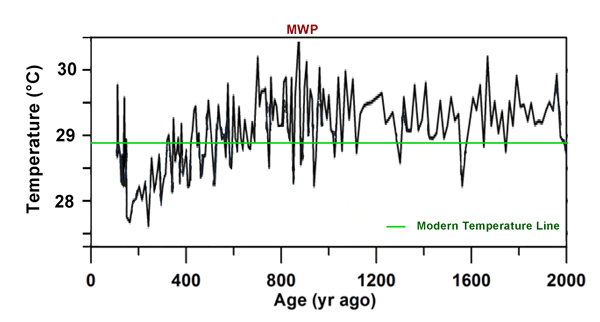Reference
Newton, A., Thunell, R. and Stott, L. 2011. Changes in the Indonesian Throughflow during the past 2000 yr. Geology 39: 63-66.
Description
Based on Mg/Ca ratios of the planktonic foraminifer Globigerinoides ruber that they obtained from a sediment core that was extracted from the seabed at the southern end (~5.3°S, 117.8°E) of the Makassar Strait, which were converted to temperatures using the paleotemperature equation of Dekens et al. (Geochemistry, Geophysics, Geosystems 3: 10.1029/2001GC000200), Newton et al. determined, as they describe it, that "the warmest sea surface temperatures of the past 2000 years occurred between 1000 and 800 years ago," which period, they say, "is broadly coincident with the Medieval Warm Period as reflected in Northern Hemisphere temperature anomaly reconstructions." From the author's Figure 2b (adapted below), however, it cannot be determined if peak MWP temperatures were qualitatively or quantitatively warmer than peak temperatures of the Current Warm Period since the data do not extend up through the present time. Therefore, we classify this study as a Level 3 study, albeit the MWP was probably warmer than the CWP.





